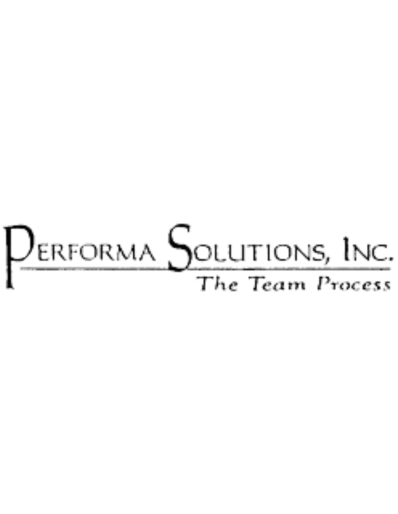
Silver Hill Financial, LLC
Silver Hill knew that they were not going to compete on rate or property valuation so they needed to compete on customer value and service quality. They did not know what exactly they needed to do, but they had read up on customer experience management and decided to look for someone to lead that effort. I originally only intended to help them identify what could be done based on what I had accomplished at Royal Caribbean. Silver Hill realized that I had been recognized by Marcus Evans, APQC, International Quality & Productivity Center, The Conference Board, and the North American Conference on Customer Management because I was sharing the same techniques, tools, and tips with Silver Hill that I had presented at these conferences – so in January 2007 they made me a fabulous offer. Although Silver Hill was already identified as the “least worst lender” in our niche, we wanted to be known as the hassle-free best so that customers (mortgage brokers, small banks, and correspondent lenders) would find it very difficult to defect to another lender with lower rates or higher appraised property valuation. We also needed to be a broker’s first call so that we could control referrals for deals that did not fit our programs. Finally, we needed to dramatically increase the number of repeat deals that we did with each customer because our cost of sale is very high.
The customer experience management and talent management work that I did in 2007 uncovered problems in the marketing message, Sales and Operations processes, communication, and other areas that are common problems in any company. I was able to convince the Marketing team that a consistent and accurate message was needed so the brand was refreshed. My team mapped the customer’s experience and helped the Sales and Operations teams identify disconnects between what we thought we were accomplishing and how the customer was affected. I helped business leaders learn how to map and improve processes (significant redundancy was removed, which sped up the processing of loan files). My team drafted standard status communications and worked with the line employees to define the timing for those messages and other updates. I replicated the Voice of the Customer research project with similar results; however, this time the message from the customers was far more powerful as it helped Account Managers and executives let go of the belief that rate and real estate valuation were the two most critical lender attributes. At Silver Hill we also discovered that one of the top six factors was “consistent processing of the loan file”, which was the opposite of what we prided ourselves on – flexibility. This gave my team further authority to identify and prevent future inconsistencies across the three US Operations offices. Also, job analyses were done and leveraged (for sourcing, attracting, selecting, onboarding, training, driving, and rewarding). An unusual combination of projects reaching their go-live date actually caused file processing time to decrease the same month that total closing volumes jumped nearly 25%. We closed over $100MM in small balance commercial loans in November following 10 months of stagnation (averaging $80MM per month). This allowed us to finally realize the company’s goal of “Bust a Billion” in annual closings.
As 2008 began, Silver Hill found itself in the enviable position of having outlived a vast majority of its competitors. By March, the only real nationwide competition for small balance commercial loans included our sister company, Interbay, and Key Bank. However, our focus is on continuing to streamline and improve our processes and our communication. The key is to survive the credit crunch and, at the same time, become even more effective at establishing and managing our customers’ expectations and emotions. When the real estate and bond markets bounce back, Silver Hill will be the one company that continued to provide exceptional service to the mortgage broker and small bank communities. It will be difficult for anyone to replicate what we bring to the table. That will make it very painful for any of our customers to leave us, and it will ensure that we are not only their first call, but we are their favorite place to bring multiple deals.
When the top two leaders of the Silver Hill University left in early 2008, I was asked to assume the role of Chief Learning Officer (without giving up my responsibilities as Director, Customer Experience). The team of twelve trainers was primarily used to deliver new hire training and follow-up courses that might bridge soft skills gaps. I immediately identified opportunities to improve the 42 actual courses that had been delivered and then challenged the team members to learn how to become performance support consultants to the business. I provided my new team with a great deal of training on competency-based talent management and made a case for delivering on-demand information to existing employees and measuring results only through improved knowledge, skill, or performance metrics. I also trained the team to be performance improvement consultants so that they could help the team leaders tackle all problems that were not going to improve through training. (Training only increases knowledge and skill, but many people were being sent to training because they did not know what their goals were, they were using faulty resources, they were not motivated to perform, etc.)
We completed several proof-of-concept projects to excite the company about the potential of our just-in-time solutions and to get the support and backing of IT. We took a blended approach to learning that incorporated knowledge acquisition (learning from books, articles, blogs, podcasts, screencasts, videos, live behavior modeling, job aids, facilitated case studies, and/or instructor-led classes), knowledge application (developmental assignments and/or simulations), and feedback (from a trainer/consultant, subject matter expert, boss, and/or mentor). I found that using wikis could provide the fastest, searchable access to much-needed information so we were looking for a free enterprise solution to install. We created a library of Wink screencasts and videos for three primary reasons: they are best at modeling how to apply a skill, we can filter out a subject matter expert's bad habits, and these solutions provide on-demand access 24/7. The boss is the best source of performance feedback and the quality of that feedback improves greatly if you provide the boss with two tools: knowledge tests and behavioral checklist assessments – so we created those for each class. We also went back to the job analyses, which uncovered missing learning content. Finally, we put together a more effective onboarding process and new hire training for both Operations and Sales people so that when we geared up for growth again, our new hires would take far less than today’s six months to ramp up to average performance.
But, alas, the financial markets continued to crash…



